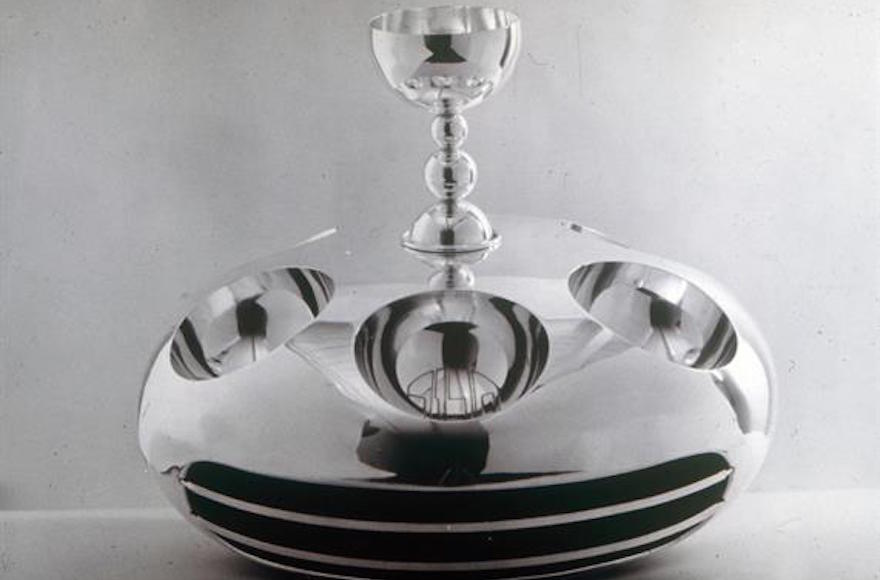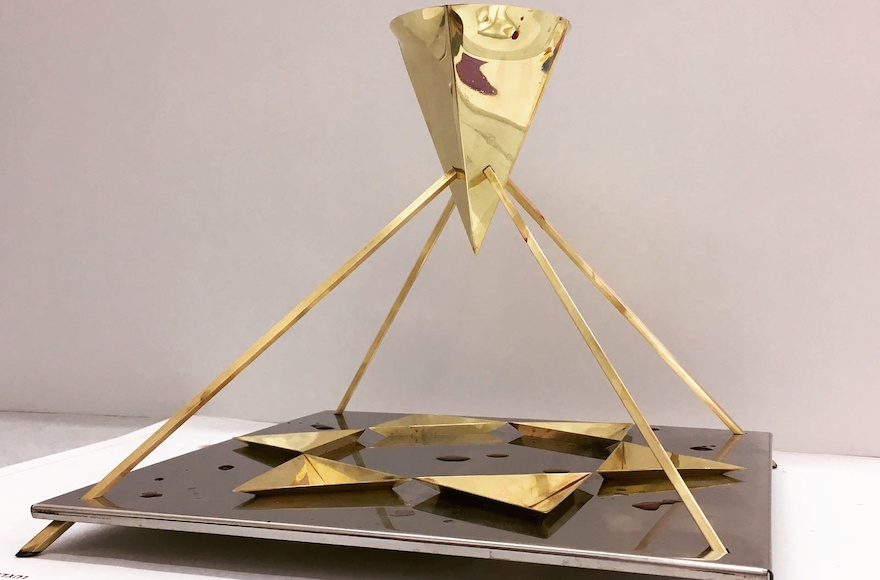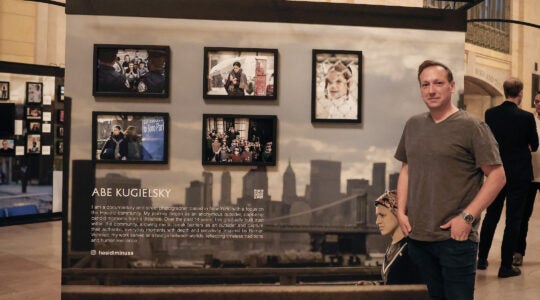(JTA) — The Torah commands Jews to share the story of their exodus from Egypt every year at Passover. Though the narrative doesn’t change, that doesn’t mean the Passover table has to look the same each year. These innovative designs, made by former students at Israel’s Bezalel Academy of Arts and Design in Jerusalem, put unique twists on the traditional seder plate, on which six symbolic foods — a green vegetable, a sweet fruit paste, two types of bitter herb, a shank bone and an egg — are placed to facilitate the telling of the Passover story.
An all-in-one seder plate and Elijah’s cup

Yoav Ben-David, 1974. (Courtesy of Bezalel Academy of Arts and Design)
This piece combines the traditional seder plate with another Passover symbol: Elijah’s cup. At the end of the seder, families open the door to their home in a symbolic gesture to welcome the prophet, and a cup of wine is kept filled should he choose to drop by.
A deconstructed seder plate

Uri Reshef, 1983. (Courtesy of Bezalel Academy of Arts and Design)
Reshef has designed a separate container, made of laser-cut metal strips, for each item. In effect, it turns the entire table into a seder plate.
A plate inspired by Jerusalem

Sari Srulovitch, 1996. (Courtesy of Bezalel Academy of Arts and Design)
Srulovitch drew inspiration from the materials and shapes that make up Jerusalem. The plate is made of stones and iron common in the city and each of the six small plates forms an octagonal star, an Islamic motif that occurs often in the city’s architecture.
A blooming Passover plate

Efrat Amir, 2005. (Courtesy of Bezalel Academy of Arts and Design)
The plate’s flower shape and patterns commemorate the fact that Passover is also referred to in Hebrew as “the holiday of the spring.” Amir also chose the flower shape to symbolize prosperity.
A pyramid-inspired seder plate

Avi Pashnov, 2017. (Courtesy of Bezalel Academy of Arts and Design)
The artist was inspired by Egypt’s pyramids in both designing the plate and the Elijah’s cup, which are attached to each other. The triangular dishes also form a Star of David.
JTA has documented Jewish history in real-time for over a century. Keep our journalism strong by joining us in supporting independent, award-winning reporting.






